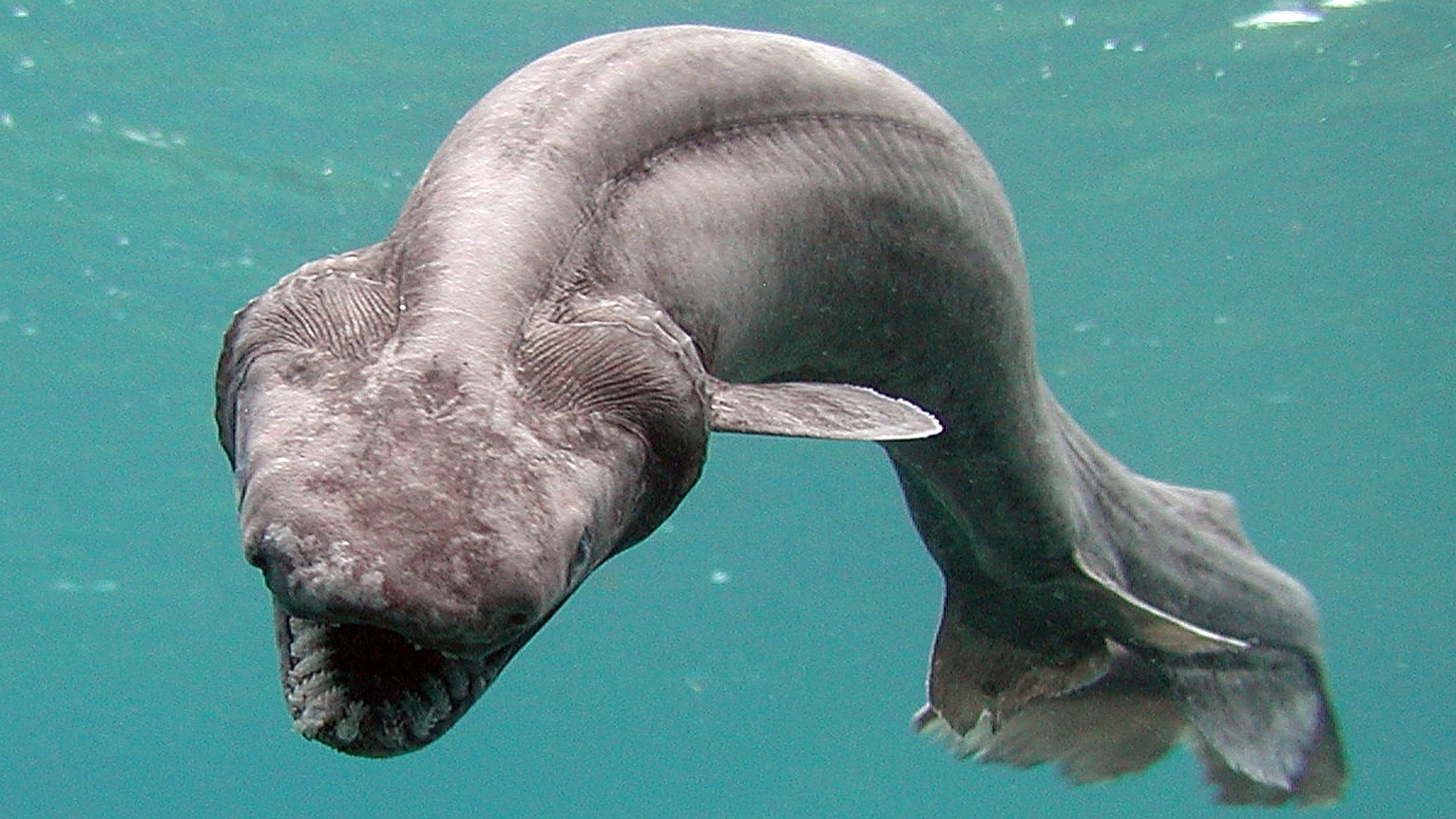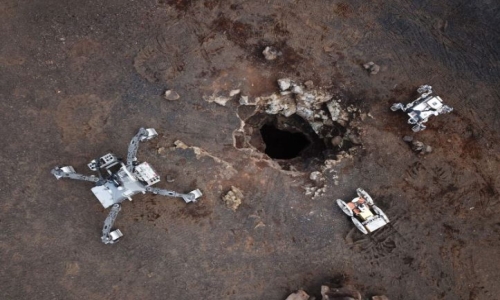


 3:44:36
3:44:36  2024-06-19
2024-06-19  1419
1419

The little-known, deepwater-dwelling frilled shark (Chlamydoselachus anguineus) is one of the most primitive living species of shark. The species name is Anguineus, which derives from the Latin for snakelike, which only partly conveys its bizarre appearance. Frilled sharks are also called living fossils because they’ve hardly changed over millions of years. One of the main reasons for their unchanging appearance is that they’ve completely adapted to deep-water habitat and at depths of about 1000 meters, there is hardly any competition from other sharks.
The head of the frilled shark is lizard-like, featuring a blunt-ended snout and a very large mouth armed with multiple rows of sharp, three-pronged teeth. While each tooth is relatively small, there are around 300 in total providing almost a thousand sharp hooks on which to trap struggling prey. Behind the head, on both sides of the body, there are six gill slits which each possess a distinctive frilly margin. The front slits on each side extend beneath the body, meeting under the throat, giving the appearance of a frilly collar. The body is dark brown or grey in color, with a large anal fin and small, paddle-shaped pectoral fins, while the dorsal fin is relatively small and set very far back on the body. The caudal fin has a small, vestigial lower lobe, while in contrast the upper lobe is very elongated and further extends the serpentine body.
Although the range of the frilled shark extends almost worldwide, it has a very patchy distribution. Populations occur on the outer continental shelves and upper continental slopes off Norway, northern Scotland and western Ireland, and south as far as northern Namibia. Other populations occur in the eastern Pacific off southern California and northern Chile; in the west Pacific, off south-east Japan, eastern Australia and New Zealand; and also possibly in the western Indian Ocean, off South Africa. As a predominantly deep-water species, the frilled shark typically lives close to the seabed or in the water column at depths between 500 and 1,000 meters, but may be found as deep as 1,500 meters. However, individuals are sometimes found higher in the water column at depths between 50 and 200 meters.
Owing to its deep-water habitat, very few observations of the Frilled shark have been made in its natural environment. Analysis of stomach contents of Frilled sharks brought to the surface indicate that this species mostly preys on deep water squid and a variety of fish, including other sharks. Interestingly, this species has also been found higher in the water column at depths between 50 and 200 meters, where it feeds on faster-swimming squid. While it is unclear exactly how the Frilled shark feeds, its set of needle-sharp, inwardly-pointing teeth, and the fact that its jaws can open extremely wide, suggest that it may actively take prey over one and a half times its own length. Moreover, it is speculated that Frilled sharks use a snake-like approach in order to catch their prey.
Frilled sharks are rarely observed in their natural habitat and therefore their population numbers are unknown. The Frilled shark like many other sharks is ovoviviparous, which means that after fertilization, the embryos develop within the female’s uterus, receiving nourishment from a yolk sac. Once the yolk sac nutrients are exhausted the embryos absorb nutrients from secretions within the uterus until birth takes place. The litter is very small, numbering only two to ten offspring which each measure between 40 and 60 centimeters in length. Studies of Frilled shark embryos indicate that this species could have a gestation period of over 3.5 years, which, if accurate, would be the longest known amongst the vertebrates.
Reality Of Islam |
|

A new NURBS

A research

Researchers
 9:3:43
9:3:43
 2018-11-05
2018-11-05
10 benefits of Marriage in Islam
 7:5:22
7:5:22
 2019-04-08
2019-04-08
benefits of reciting surat yunus, hud &
 9:45:7
9:45:7
 2018-12-24
2018-12-24
advantages & disadvantages of divorce
 11:35:12
11:35:12
 2018-06-10
2018-06-10
 6:0:51
6:0:51
 2018-10-16
2018-10-16
 2:42:26
2:42:26
 2023-02-02
2023-02-02
 3:18:29
3:18:29
 2022-12-24
2022-12-24
 2:11:12
2:11:12
 2022-10-15
2022-10-15
 8:39:51
8:39:51
 2022-09-23
2022-09-23
 7:0:55
7:0:55
 2022-05-17
2022-05-17
 7:32:24
7:32:24
 2022-02-14
2022-02-14
 5:58:12
5:58:12
 2021-12-18
2021-12-18
 5:41:46
5:41:46
 2023-03-18
2023-03-18
| LATEST |